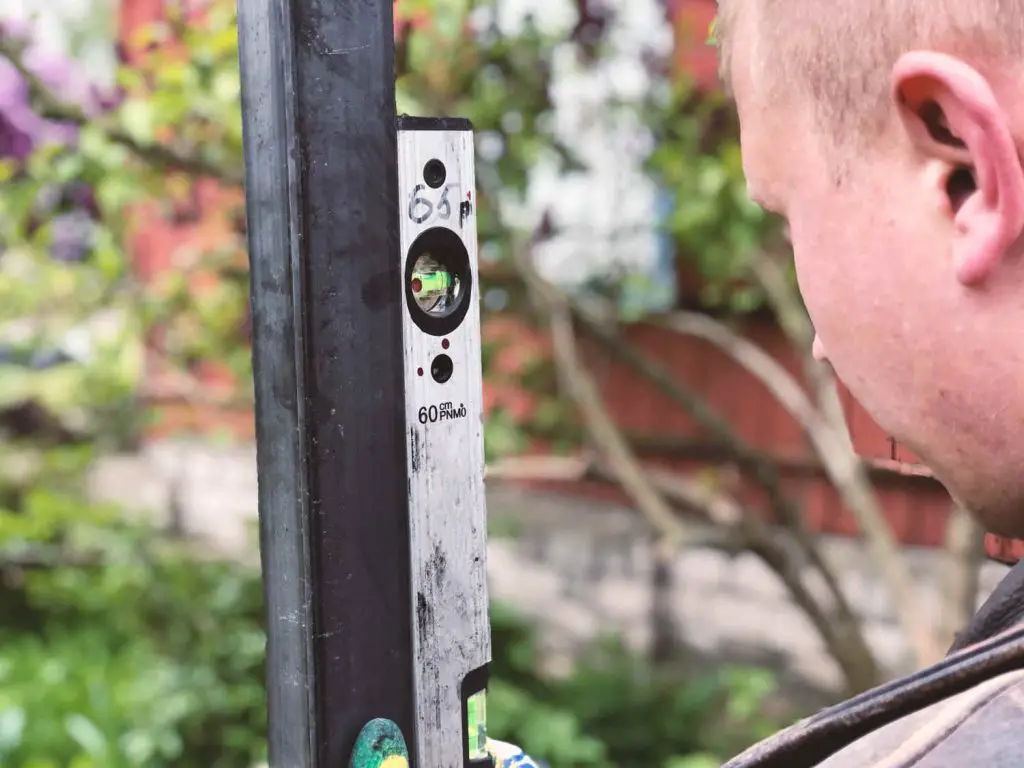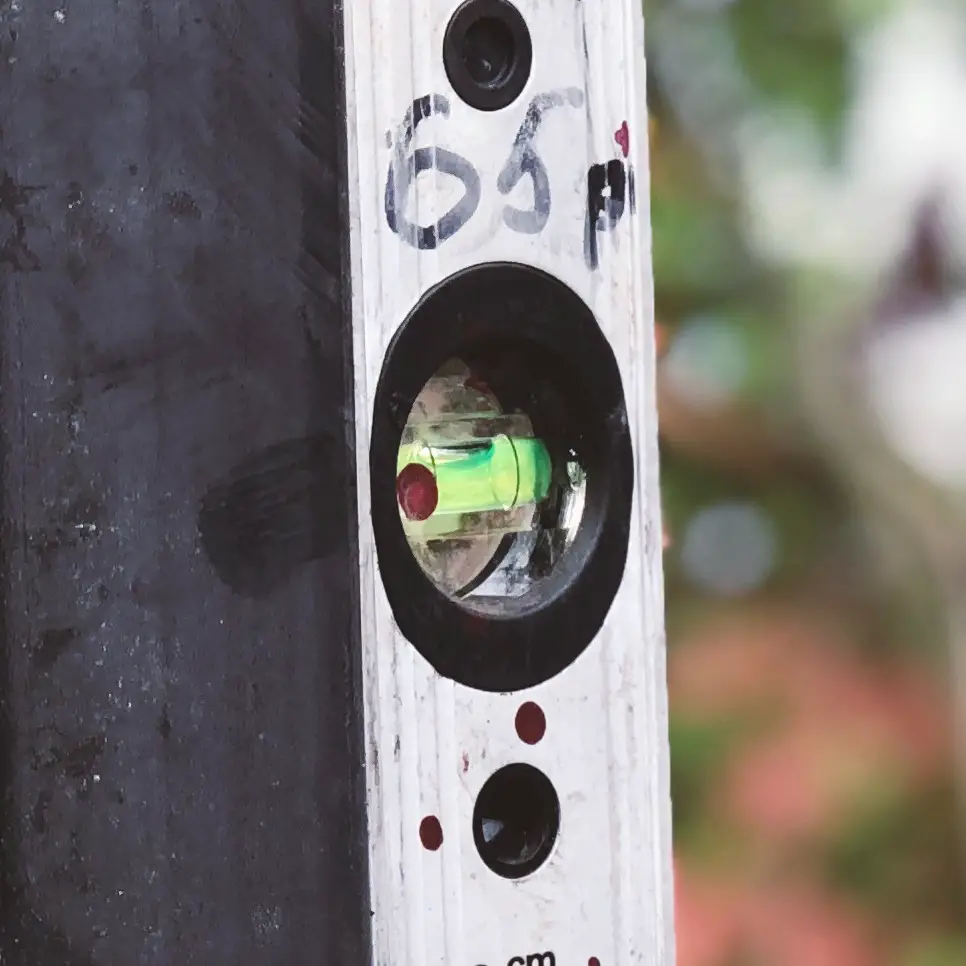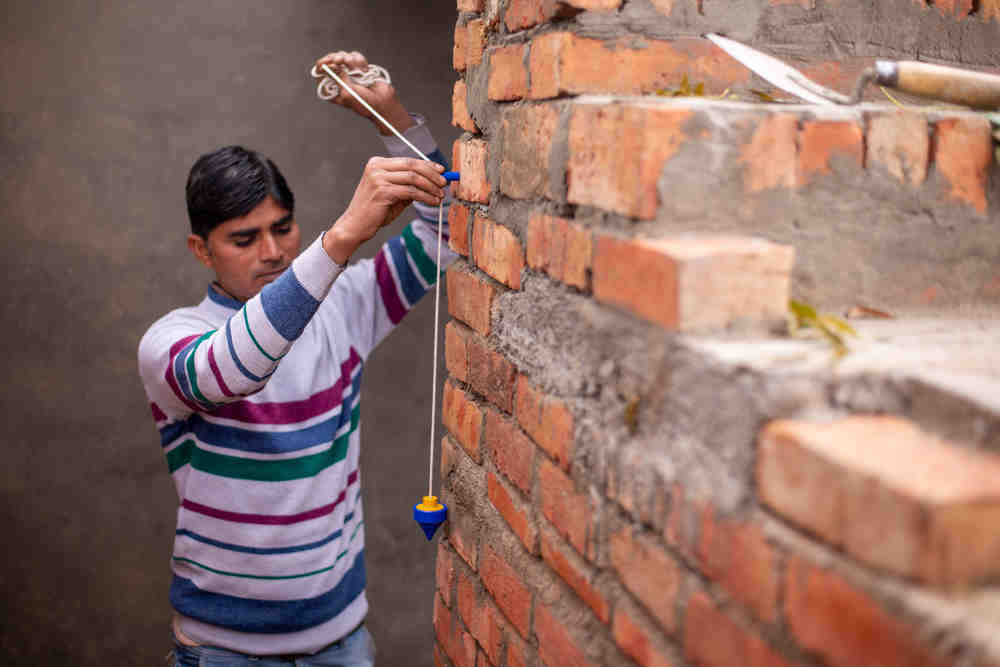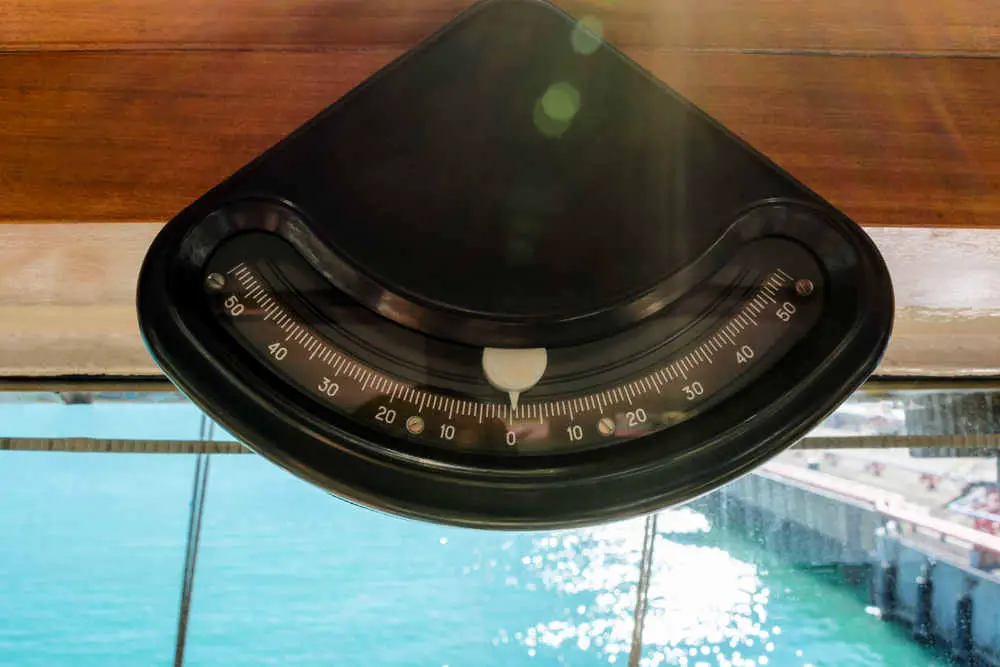Do you want to check how straight or flat a surface is in either vertical (plumb) or horizontal (level) planes? Also maybe you’ve been asked to test both but are unsure where to start?
Take it easy because this article is about to discuss being plumb vs. being level. And hopefully, it will help shed some light on what each of these terms means.
Essentially both of these terms are similar to measuring straightness and flatness, either individually or in conjunction with each other. Measuring straightness or flatness means the surface must be straight or flat enough, otherwise, the measurement’s reading is not reliable to take. However, straightness and flatness don’t have a datum reference. While level and plumb have a datum reference which is called earth gravity.
Level is perpendicular to earth gravity while plumb is equal to earth gravity line.
Widespread use will be throughout construction, civil engineering, carpentry, woodworking, machining, and structural. These principles can and are applied across many fields so are worth knowing about.
What is Meant When Something is Level?
When we test for levelness, it is usually in relation to a surface or item being measured in the horizontal plane, checking for how much slope there might be.
In terms of defining tilt and slope, we use this source. It says that the tilt is about in relation to Y-axis while the slope is about in relation to X-axis.
If there is no slope across this measurement then it is said to be level, which also means it will be parallel with the horizon or perpendicular to earth gravity.
This we would typically measure in one plane or axis at a time, so front to back or side to side.
However, with modern-day instruments and the assistance of computer processors, we’re able to take readings in multiple directions at once, giving a more accurate overall picture.
What is Meant When Something is Plumb?
If we’re wanting to check flatness on a vertical axis, we would reference it to being plumb.
So, if there is no tilt side to side and therefore good alignment straight up and down, it would result in a surface being perfectly plumb.
A plumb bob is an example of being plumb. Look at how the string is very straight and the pointed end exactly goes down to earth.
Tools and How to Measure Level in the Horizontal Axis
Spirit Level
Commonly a spirit level will be used. You may also hear it called a carpenter’s level, box beam level, bubble level, post level, or even just simply a level.
This relies on a bubble suspended in a vial of colored liquid which has lines to denote the center point.
When it’s stuck on to the surface, you’d like to check the bubble should be at the center area if the object is level. If the bubble moves to one side or the other, it means the surface is having a slope.
Check and make sure the spirit level and surfaces are both clean. Recheck using the level after rotating through 180 degrees to ensure that its measures accurately.
Machinist or Precision Level
Another way to check whether a surface is level or not is by using an engineer level. This type of precision level will show a reading that lets you know the slope in number. Especially if you are working with a surface plate, this surface plate will be the reference plane, therefore it has to be level.
Speed Square
It’s level when the string that starts from the pivot point goes through the 45-degree marking.
Tools and How to Measure Plumb in the Vertical Axis
Spirit Level

Here is the zoomed image and you will see the spirit level’s bubble is not at the center which means the post is not plumb.

With most of the larger levels you’ll find that they have a couple of liquid compartments on them, so can be used to check vertical readings as well.
To do so follow a similar approach to ensuring the surface is clean as is the level itself, place it against the surface and check the reading.
If the bubble is centralized then you have a plumb vertical line.
The traditional method from antiquity relied on the use of gravity as a constant, weight, and string.
Since we know gravitational forces will act directly downwards and perpendicular to the horizon the line being pulled downward vertically will be plumb.
Plumb Bob
You could also use a plumb bob to check whether something is plumb or not such as in carpentry.

Speed Square
You could also use a speed square and plumb bob to measure the tilting of an object in angles. As we know that a speed square commonly comes with a protractor and pivot point. When it is plumb, the plumb bob’s string that starts from the pivot point has to extend and pass through the 90-degree marking.
Inclinometer
An inclinometer can be installed in your car or ship dashboard and it will show the tilting of your car or ship. Unlike a standalone plumb bob that doesn’t have a reading in number, an inclinometer shows the reading in angle degree. Check this page to see our recommended anemometer that comes with an inclinometer.

Laser Levels to Check for Plumb and Levelness
More modern equipment is available for us to measure with, including a laser level. After the laser level’s body is level, you can transfer its levelness by using the laser. The cross-line laser level lets you determine the plumb as well. However, it’s wise to check the accuracy of the laser straightness and the formed 90-degree angle (squareness or perpendicularity) of the crossing laser beam.
This is able to check readings across multiple lines both vertically and horizontally. Also, it gives you an insight into how the surfaces are in relation to each other. It does so by using beams of laser light that are projected or extended onto the surfaces.
Not only is that highly accurate, providing it is set up correctly, but is also a more efficient use of time.
Due to how this functions, trying to use them in bright daylight or areas where the artificial lighting is very high can be tricky.
